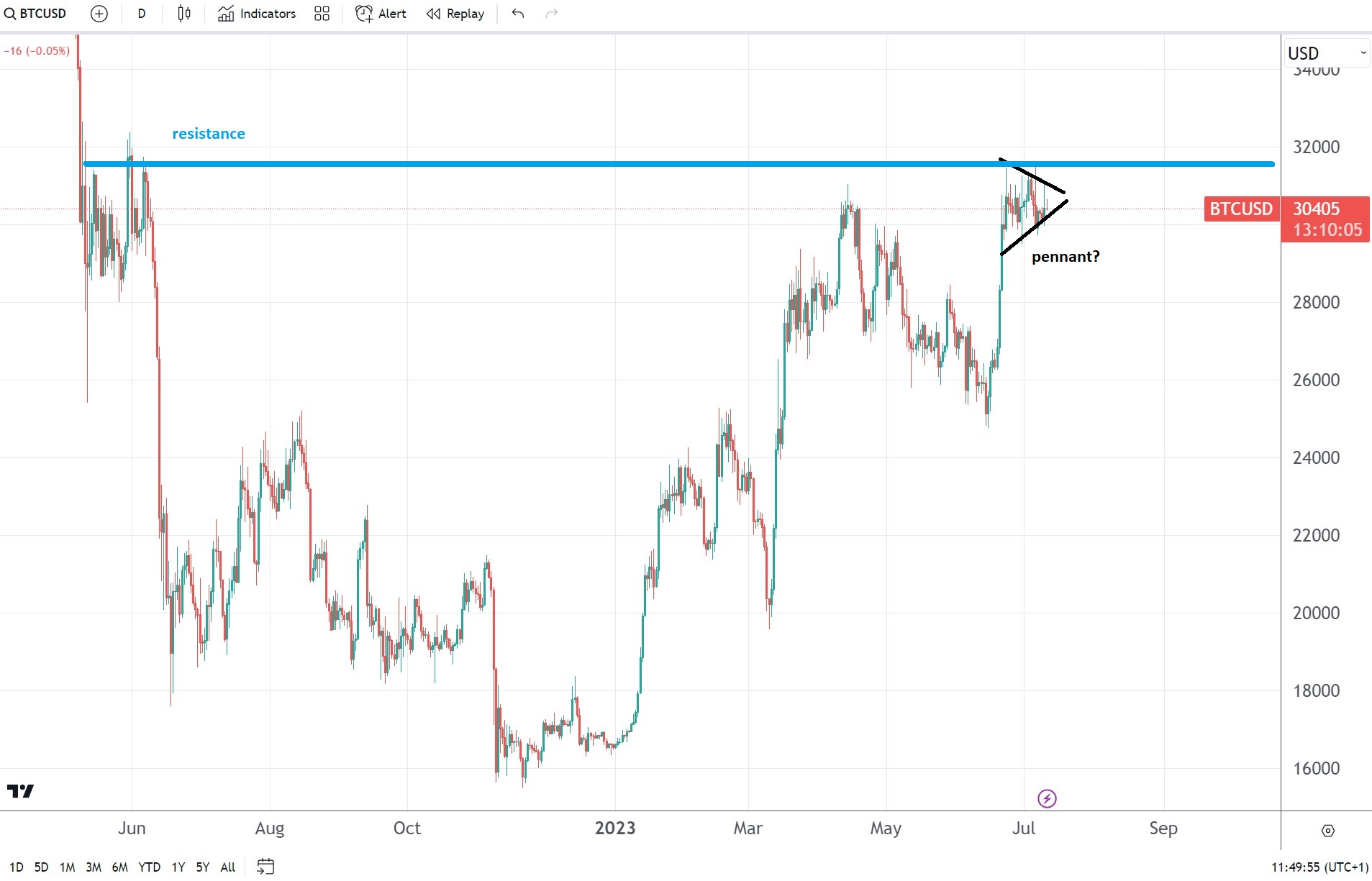
Bitcoin forms a possible pennant formation ahead of the US inflation report. The disinflationary process in the US is set to continue.

- Bitcoin forms a possible pennant formation ahead of the US inflation report
- The disinflationary process in the US is set to continue
- If the dollar takes a hit, Bitcoin may rise above horizontal resistance
Summer trading is usually slow and tricky. Even the cryptocurrency market often consolidates levels longer than the norm.
It is the case with Bitcoin lately. The good news for cryptocurrency fans is that Bitcoin price holds close to the year’s high.
Therefore, one could only ask if this consolidation is a continuation pattern before another leg higher or if sellers put pressure here ahead of the key US inflation report to be released tomorrow.
Like it or not, Bitcoin’s performance is linked to the way the US dollar moves. As such, US economic data is critical for the digital asset’s performance, especially data directly impacting the Federal Reserve’s monetary policy decisions.
June US CPI is expected to show further declines
It should be obvious by now that inflation is cooling in the Western Hemisphere. Not all countries have seen similar trends, but the disinflationary process is in full force.
That is why traders expect the June US CPI report, due for release tomorrow, to show that the annual inflation in the United States dropped to 3.1% from 4% previously. If matched by the actual data, the US dollar will take a hit as the bets of further increases from the Fed will decline dramatically.
Hence, Bitcoin should pop above the horizontal resistance seen at $32k.

A possible pennant keeps Bitcoin hodlers optimistic
A pennant is a bullish technical analysis pattern. The market typically rallies after a bullish breakout and travels a distance equal to the distance prior to the pennant’s formation.
In Bitcoin’s case, this is about $6k on top of $31k, so $37k is the logical target.
But that won’t happen unless the US inflation report delivers a positive surprise. More precisely, if the inflation cools down more than expected, the Fed is less likely to raise rates, and so the US dollar should weaken.

